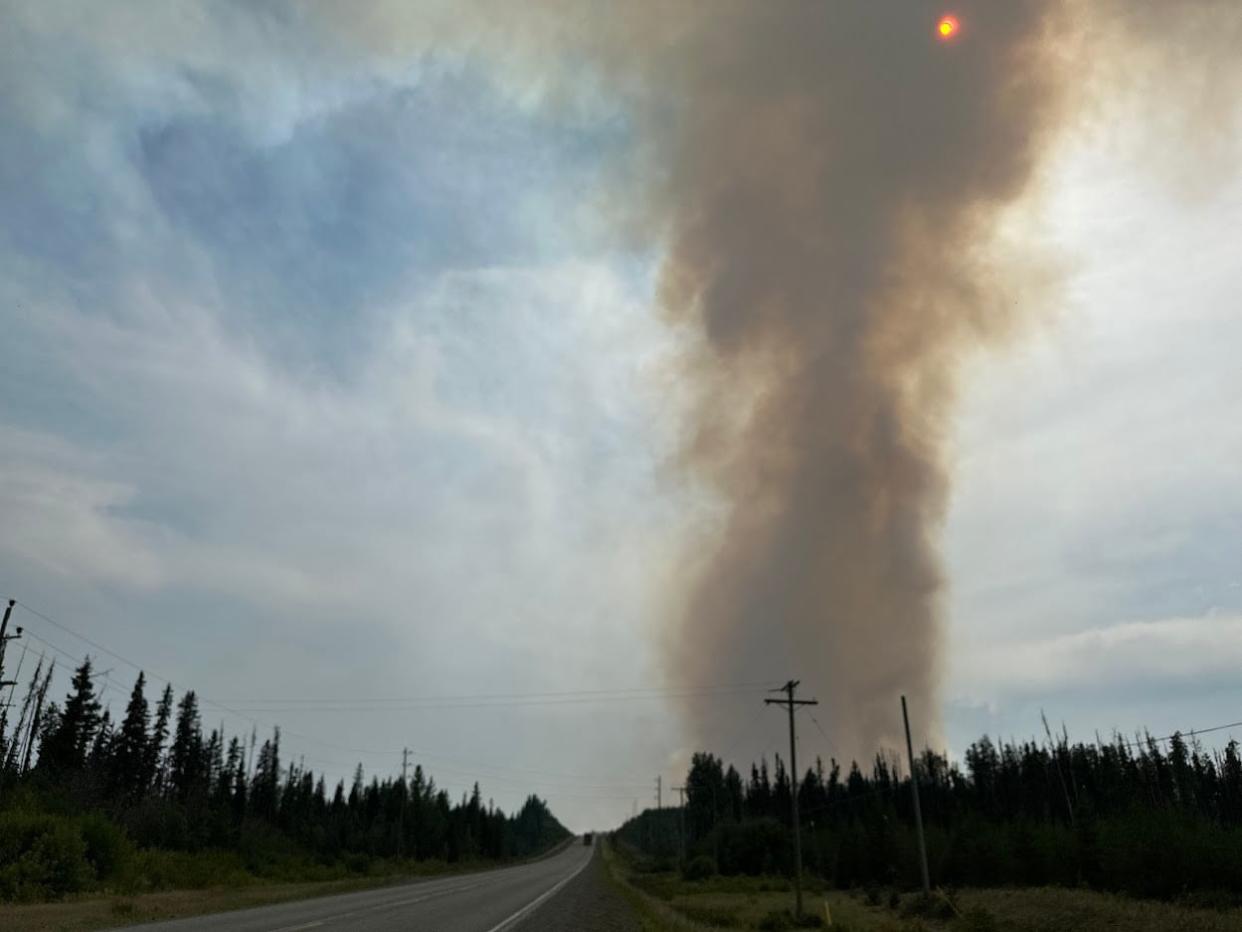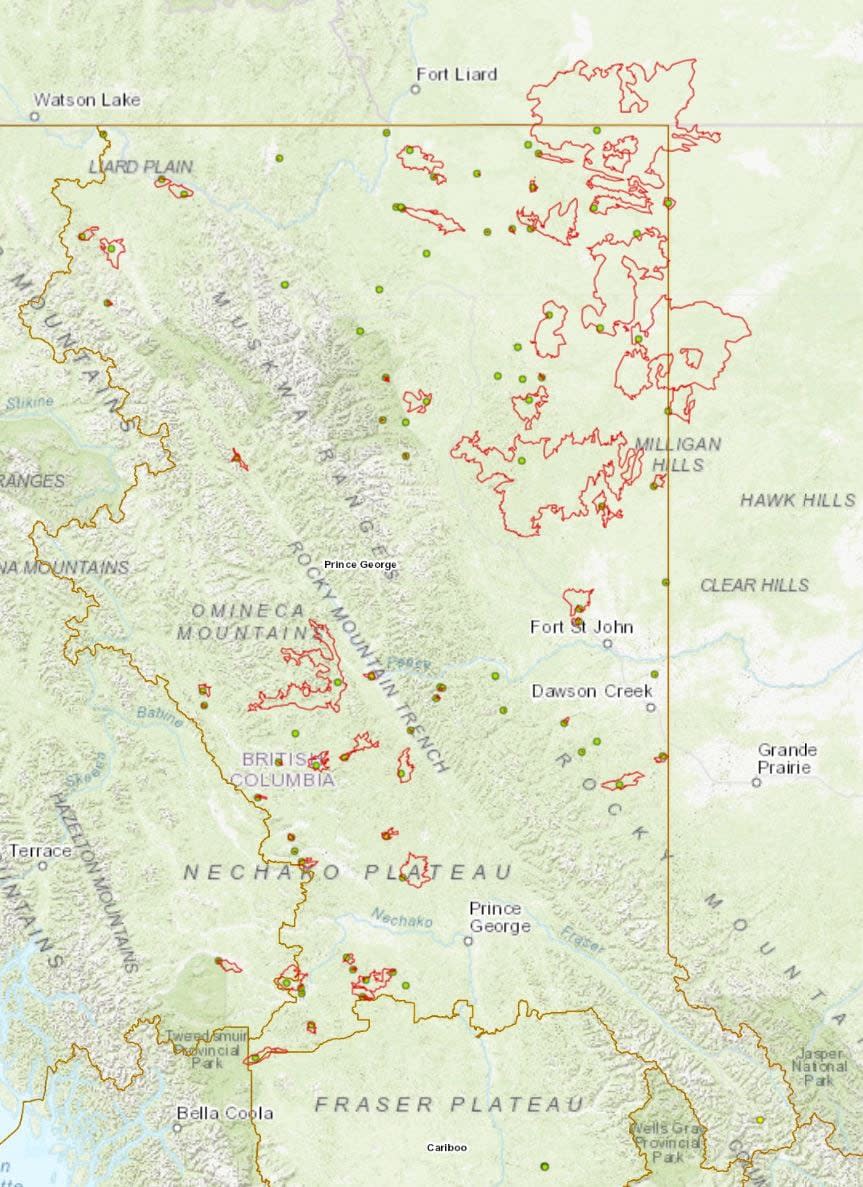2023 'holdover wildfires' producing smoke again: wildfire service

Wildfires that went dormant over the winter have once again moved above ground, producing visible smoke and smouldering, the B.C. Wildfire Service says.
The service says these "holdover fires" are primarily in the Prince George Fire Centre, which covers the northeastern quadrant of the province, and are being aided by ongoing drought conditions in the region.
"A holdover fire is a fire that remains dormant and/or undetected for a considerable time after it starts," the service said in a bulletin, adding they are particularly common for lightning-caused fires or fires of "considerable size."
It is not uncommon for holdover wildfires to be reported, though in past years notices about their reappearance generally come later in the year, around March or April.
But with 2023 marking B.C.'s most destructive wildfire season on record and historically low precipitation levels, fire officials had already been preparing for the 2024 season to get underway earlier than usual.

The B.C. Wildfire situation map as of Feb. 8, 2024. Areas in red outline indicate spots where wildfires may remain active. (B.C. Wildfire Service)
The service says it is monitoring the fires "and will determine appropriate courses of action as spring approaches."
James Bergen, wildfire officer for the Fort St. John Fire Zone, said a warming trend in early January had led to the ground drying out and fires re-emerging.
"This smoke is not necessarily a risk to the public in any way, shape or form," he told CBC News. "Right now, there's no risk of fire growth or significant fire growth."
Bergen said the service would monitor the holdover fires using infrared scans as the spring approaches, and any fires that are at risk of spreading would be fought using the methods deployed in the summer, like bucketing or heavy equipment.
Anyone with concerns about a fire in their area is asked to contact the B.C. Wildfire Service at 250-561-4629 or infopg@gov.bc.ca.
Ecologist predicts another hot, dry wildfire season
Robert Gray, a wildland fire ecologist, says holdover fires arise because flames can burn underneath the top layer of soil for months, and become more visible as the weather becomes drier.
Fire tends to burn upwards, according to Gray, and when the snow cover or water above the flames evaporates, the flames can make their way upwards through the soil layers again.
"There's a lot of these fires on the landscape now, especially in the north because the layer of the forest fuel bed dried out enough," he told CBC News. "It has stayed dry through the drought, so fires got established into there and they're going to continue to burn.
"Whereas past years it may have a cap of snow on it, it's gonna stay underground until that snow is gone. But this year the snow isn't there."
Gray said that the El Niño weather pattern — which results in milder, drier winter weather for much of Canada — will continue to impact drought-stricken B.C. heading into the summer and wildfire season.
"This could end up being another very, very hot, dry season," he said.


